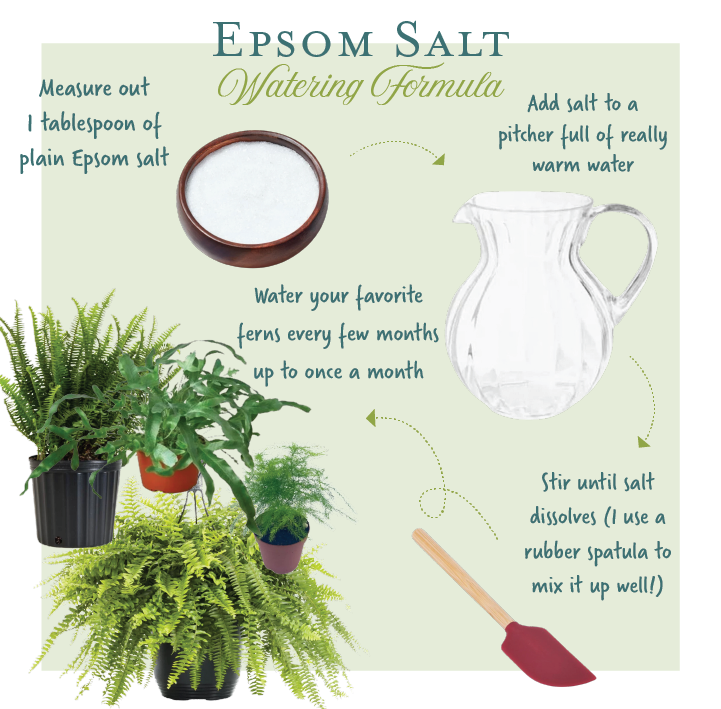Explore Why Some Plants Turn Down Epsom Salt as a Nutrient Source
In the complex globe of plant nourishment, the denial of Epsom salt as a sensible nutrient resource by some plants presents an interesting quandary. The factors behind this discerning habits dive right into a complicated interplay of plant absorption systems, the one-of-a-kind chemical structure of Epsom salt, and plant-specific nutrient choices.
Plant Absorption Mechanisms
In delving right into the elaborate realm of plant absorption systems, it comes to be obvious that the process is governed by an advanced interaction of physiological characteristics and molecular paths. Plants take in nutrients mainly via their origins, utilizing numerous transportation systems to uptake important aspects such as nitrogen, potassium, magnesium, and phosphorus. Magnesium, a crucial component in chlorophyll synthesis and enzyme activation, plays a vital role in plant development and growth.
The absorption of magnesium includes several actions, beginning with its availability in the soil service. As soon as liquified, magnesium ions are used up by plant roots with particular transportation proteins installed in the cell membranes. These healthy proteins facilitate the motion of magnesium across the origin cell walls and into the plant's vascular system, where it is then dispersed to various cells to support various physical features.
Understanding the intricate mechanisms behind magnesium absorption in plants sheds light on how this crucial nutrient contributes to total plant wellness and performance. By maximizing magnesium uptake paths, cultivators can enhance crop yields and high quality, underscoring the importance of understanding plant absorption dynamics for sustainable agriculture techniques.
Epsom Salt Chemical Structure
The chemical structure of Epsom salt, likewise understood as magnesium sulfate heptahydrate, discloses an unique arrangement of elements that contribute to its special properties and applications. The seven water particles are loosely bonded to the magnesium sulfate substance, permitting it to dissolve easily in water and be easily taken up by plants via their origins.
The crystal framework of Epsom salt develops monoclinic prisms, which are elongated crystals with parallel ends. This crystal shape affects the physical homes of Epsom salt, such as its structure and solubility. Recognizing the chemical framework of Epsom salt is crucial for comprehending its actions as a nutrient resource and its interactions with plants in gardening and farming techniques.
Plant-Specific Nutrient Preferences
Plants show distinctive choices for particular nutrients, emphasizing the significance of comprehending their individual requirements for optimal development and growth. These choices are dictated by different factors, consisting of the plant types, stage of development, ecological problems, and dirt structure. For instance, some plants may grow in nitrogen-rich soils, while others need more phosphorus or potassium for healthy and balanced development. Comprehending these plant-specific nutrient preferences is important for maximizing plant returns, improving decorative plant growth, and advertising general plant health and wellness - what plants don't like epsom salt.

Plant-specific nutrient preferences can additionally vary based on whether the plant is a monocot or dicot. Monocots, such as lilies and yards, have different nutrient requirements contrasted to dicots like roses and tomatoes. Additionally, particular plants may display specific shortages or toxicities when exposed to inadequate or excess degrees of certain nutrients. By customizing nutrient supplements to fulfill the exact needs of each plant varieties, farmers can maximize plant development, reduce nutrient waste, and support sustainable farming techniques.

Dirt Ph and Nutrient Uptake
Provided the important role of plant-specific nutrient preferences in maximizing growth and wellness, recognizing the relationship in between dirt pH and nutrient uptake ends up being extremely important. Soil pH plays a crucial function in identifying the availability of crucial nutrients for plant uptake. Different plants have varying pH preferences for optimal nutrient absorption. Acidic soils with a lower pH are favorable for plants like azaleas and blueberries, while alkaline dirts with a higher pH suit plants such as lilacs and clematis.
Dirt pH influences the chemical kinds of nutrients in the soil. In acidic soils, nutrients like manganese, iron, and light weight aluminum can end up being more offered, however extreme level of acidity can bring about toxicity problems. On the other hand, alkaline dirts might restrict the availability of nutrients like iron, zinc, and copper, impacting plant development. Keeping the suitable pH degree in the soil is vital helpful site for ensuring that plants can effectively uptake the required nutrients for their healthy and balanced growth and efficiency.
Genetic Consider Nutrient Uptake
In the realm of plant nourishment, the interplay of genetic elements considerably influences the uptake of necessary nutrients essential for plant development and advancement. Hereditary elements play an essential duty in shaping a plant's capacity to absorb and make use of nutrients efficiently.
Furthermore, genetic aspects click to find out more additionally determine the effectiveness of nutrient uptake systems within plants. Some plants might possess genetic qualities that improve their capacity to feed on nutrients from the dirt successfully, giving them an affordable advantage in nutrient-poor environments. On the various other hand, hereditary variants can likewise result in constraints in nutrient uptake, making sure plants more at risk to deficiencies even when nutrients are plentiful in the dirt.
Comprehending how hereditary aspects affect nutrient uptake is critical for developing techniques to maximize plant nourishment and improve plant efficiency in different farming setups. By unraveling the genetic mechanisms included in nutrient uptake, researchers can work in the direction of establishing genetically boosted plant ranges with improved vitamins and mineral procurement abilities.
Final Thought

In the detailed world of plant nourishment, the denial of Epsom salt as a sensible nutrient source by some plants positions an interesting conundrum. what plants don't like epsom salt. Recognizing these plant-specific nutrient preferences is crucial for making best use of crop yields, improving decorative plant development, and promoting general plant health and wellness
By customizing nutrient supplements to satisfy the specific needs of each plant species, cultivators can optimize plant development, reduce vitamins and mineral waste, and assistance lasting my explanation farming techniques.
In the world of plant nutrition, the interplay of hereditary variables substantially influences the uptake of vital nutrients crucial for plant growth and advancement. Recognizing these complexities in plant nutrient uptake is crucial for enhancing plant development and wellness in farming methods.